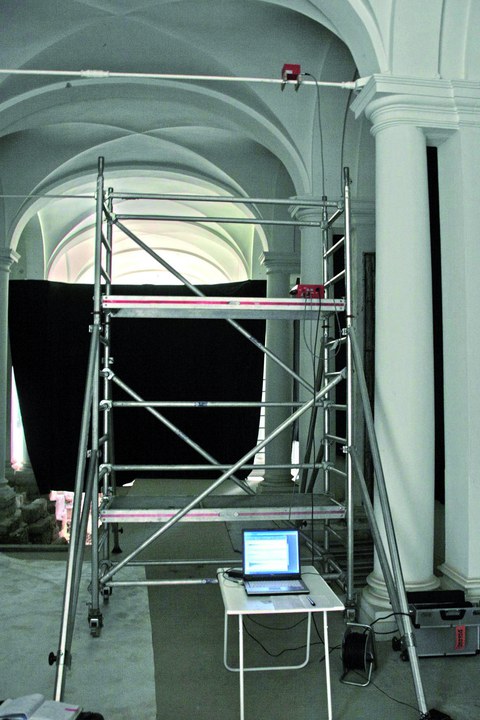Long-term measurement in the Dresdner Zwinger
Table of contents
Project data
| Titel | Title Freistaat Sachsen, vertreten durch Staatsbetrieb Sächsisches Immobilien- und Baumanagement, NL Dresden Zeitraum | Period 06.2009 – 01.2010 Leiter | Project manager Dr.-Ing. Torsten Hampel Bearbeiter | Contributors Christian Dittrich, Dr.-Ing. Torsten Hampel, Dr.-Ing. Silke Scheerer, Dr.-Ing. Thoralf Schober, Thomas Wagner Projektpartner | Project partners Professur für Stahlbau am Institut für Stahl- und Holzbau, Fakultät Bauingenieurwesen, TU Dresden |
Report in the yearbook 2009
Long-term Measurement in the Dresdner Zwinger

Frequency Analysis of a Pre-stressed Anchor
Changes were observed in existing cracks in the Eastern Gallery of the Dresden Zwinger in Spring 2009. The Otto-Mohr-Laboratory was, therefore, appointed to monitor selected cracks at the base and head of selected columns for a period of several months. Temperature changes were also monitored at several points in order to determine whether or not there is a link between these two variables. In addition, actuall tensile stresses in horizontal tie rods also needed to be determined.
Measurement Procedure
Cracks were monitored at five selected points using linear variable displacement transducers (LVDT). The required measurement range was selected based on the initial crack width Existing paint on the columns had to be carefully and selectively removed in order to properly affix transducers. The adhesive used has a high adhesive strength and very low shear resistance allowing for easy removal without leaving a residue on the stone. Data were retrieved and saved every six minutes after initial measurement.
Simultaneous with crack width monitoring, temperatures were measured inside and outside the gallery, as well as at the member temperature of the reinforced concrete slab close to the peak of the arch and in the arch abutment. Sensors for the latter two measurements were inserted directly into holes drilled into the components specifically for this purpose. The openings were then sealed with an insulating material.
The temperature-dependent deformation of one representative anchor was also recorded. From these values, conclusions can be drawn about the tensile force changes within the tie rods. The tensile force at the beginning of the measurement was determined at six selected ties with vibration sensor to determine the eigenfrequency.
Results
The measured data of the long-term monitoring were collected each week. Since the monitoring is not yet complete, final results are unavailable at present. The determination of the anchor forces has revealed very different results. One of the six ties had no tension force. Three of the tie rods tested, however, had a permant force of about 55 kN. These results are now included in static analysis.
